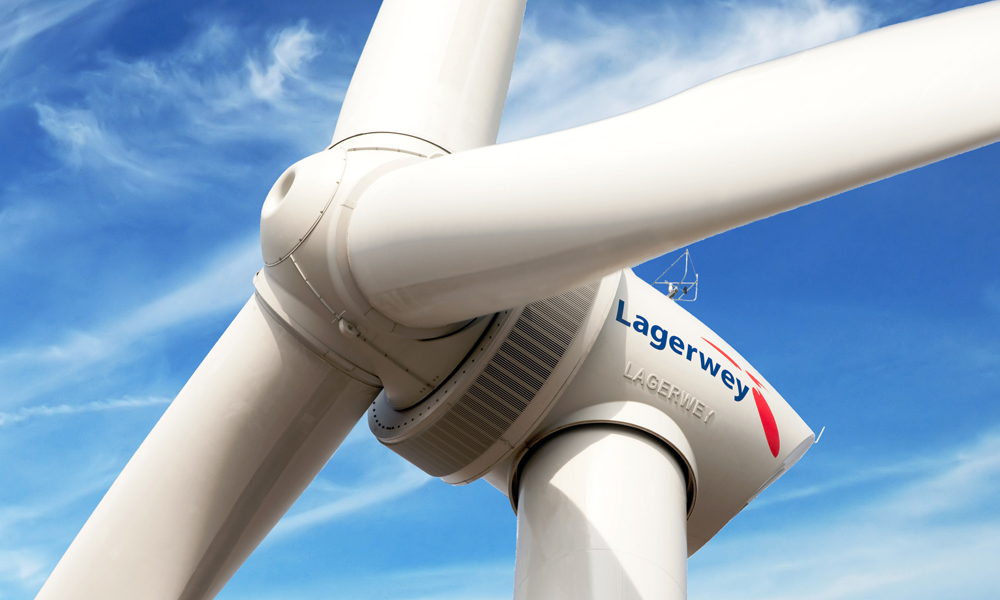
Rosatom to Build Three Wind Parks in Russia
back to contentsRosatom considers wind power projects as its major non-nuclear point of growth. This was announced by Rosatom’s Deputy CEO Kirill Komarov in his interview to RBC News. In 2016, Rosatom won the bid to construct three wind farms with a total capacity of 610 MW in Russia. This is about 17% of the total wind power capacity to be commissioned in the country by 2024.
The project aims to build three wind parks in Russia’s southern territories of Adygea and Krasnodar. “It is all about creating a totally new industry in Russia,” Kirill Komarov said. “The goal set by Rosatom is not limited to building wind power stations. The company aims to establish a regulatory and certification framework, train workforce, increase the local content in wind turbines, and facilitate R&D efforts in this field.” With total investments of nearly 84 billion rubles, the first phase of the project will require 65 billion rubles to be covered by bank loans. “We are about to select a bank to be our financial partner in this large-scale, 1.3 billion euro project,” Kirill Komarov said to RBC News.
Rosatom has chosen the best partner
Such an ambitious project needs a technology partner. After an in-depth market research, the decision was made to go with Lagerwey, a wind turbine manufacturer from the Netherlands. Founded in 1979, the company has nearly 40 years of experience in wind generator design, manufacture, operation, supply chain management and after-sales maintenance. According to Rosatom’s experts, the Dutch manufacturer has developed the most promising technology that needs no gearbox. Having much lower maintenance costs than other wind turbines, direct drive generators have been gaining their share of the global market over the recent years.
The agreement with Lagerwey provides for the local content to be at least 65% of wind generator components. A joint venture will be established later this year, with the two parties holding equal shares in it. This approach is expected to secure maximum interest of the Dutch company towards projects in Russia. The joint venture will be engaged in production, assembly and erection of wind generators, supply chain management, maintenance services and distribution of Russian-built wind turbines on the domestic and foreign markets.
“It is a joint venture, not just technology transfer. It means Lagerwey is prepared to share risks. And we will not confine ourselves to the existing technology as we see our task as one of ensuring its continuous improvement. Technology in this sector [renewable energy] is updated virtually every day,” Kirill Komarov said.
The partnership between Rosatom and Lagerwey will be an excellent opportunity to set up local production of wind generators and promote Russian products on the global market, according to Rosatom.
Another reason to select Lagerwey as a project partner is an attractive prospects of exporting Lagerwey-designed generators to overseas regions of Rosatom’s presence. Apart from having excellent operating parameters (capacity utilization, power curve, etc.), Lagerwey wind generators are the most light-weight and compact in the class and have modular design. These factors make the overall logistics process much easier and enable the delivery of Lagerwey wind generators to areas with poor transport infrastructure.
Local content
According to Kirill Komarov, Rosatom has all necessary competencies and capacity to set up local production. “Rosatom is a unique company in terms of business scope. We invest in power generation and own nearly 27% of Russia’s total generation capacity. We know how to build power stations and have hands-on knowledge of the power market. More importantly, we have our own mechanical engineering facilities”.
According to Igor Kotov, CEO of AEM Technologies (a subsidiary of AtomEnergoMash, Rosatom’s nuclear engineering division), several options have been explored to set up production of wind generator components in Russia. Steel billets for hubs, nacelles and rotors will be cast at AEM Technologies’ foundry in Petrozavodsk. Atommash in Volgodonsk will be the main production hub as it has necessary infrastructure, including a landing pier. The site is conveniently located to ship wind turbines to Southern Russia. In 2017, Atommash will begin manufacturing modular towers and assembling key wind generator components, such as nacelles, hubs, generators and cooling systems. “This is the site where Umatex Group [the management company of Rosatom’s composite material division] will also produce blades, the generator’s most sophisticated component,” added Igor Kotov.
“The production chain we are going to build will enable us to manufacture wind generators both for the domestic and global markets. I am sure that our products and services will be interesting for those willing to invest in the wind power industry. We are preparing to enter foreign power markets, which we know perfectly well. Every time we enter a new local market – be it Egypt, India or China – we start with building relationships with the government. We understand how their power markets work. And a much more interesting offer for our foreign customers is that combining two products instead of just one – wind power and nuclear,” Kirill Komarov concluded.




